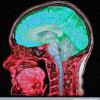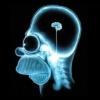Not sure if this is offtopic but the below info is taken from my post in the following thread:
Interestingly, the recent study pasted in below, "Changes in Cortical Dopamine D1 Receptor Binding Associated with Cognitive Training", demonstrated: "a high level of plasticity of the neuronal system defined by cortical D1 receptors in human volunteers. The findings were specific because the D2 system did not show any relation to WM changes..."
The below study (pictures of figures omitted) seems to have confirmed that intensive brain training leads to a change in the number of dopamine D1 receptors in the cortex.
I wonder how permanent is this change (ie. will the changes remain after the intensive brain training has ceased)?
What is the significance of a change in the number of dopamine D1 receptors in the cortex and "a high level of plasticity of the neuronal system defined by cortical D1 receptors in human volunteers"?
http://www.klingberg...b/McNab2009.pdf
Changes in Cortical Dopamine D1 Receptor Binding Associated with Cognitive Training
Fiona McNab,Andrea Varrone,Lars Farde,Aurelija Jucaite,Paulina Bystritsky,Hans Forssberg,1 Torkel Klingberg1*WM (18, 19).
Working memory is a key function for human cognition, dependent on adequate dopamine neurotransmission. Here we show that the training of working memory, which improves working memory capacity, is associated with changes in the density of cortical dopamine D1 receptors. Fourteen hours of training over 5 weeks was associated with changes in both prefrontal and parietal D1 binding potential. This plasticity of the dopamine D1 receptor system demonstrates a reciprocal interplay between mental activity and brain biochemistry in vivo.
Fig. 1. Maps of baseline D1 and D2 BP, averaged across 13 human volunteers. (A) The averaged MRI, normalized to MNI space. (B) D1 BP, measured with [11C]SCH23390, averaged across participants (the bar shows absolute D1 BP). © Overlay of (B) on (A). (D) D2 BP, measured with [11C]Raclopride, averaged across participants (the bar shows absolute D2 BP). (E) Overlay of (D) on (A).
Fig. 2. (A to E) The five posterior (red) and frontal (green) cortical ROIs, identified from the fMRI results (the contrast of activity recorded during the WM task minus activity recorded during a control task) and used to constrain the analysis of D1 BP. The blue lines indicate where the axial and coronal planes intersect. (F to J) The application of the quadratic model for the analysis of change in WM capacity for each of the ROIs. The x axis shows D1 BP before training, the y axis the D1 BP after training, and the z axis the improvement in WM. The colored surface represents predicted values, with warmer colors representing higher values on the z axis. The black circles represent the observed data. This model predicted change in WM capacity in all except the left frontal ROI [right posterior: F(2,10) = 4.87, P = 0.033; left posterior: F(2,10) = 4.82, P = 0.034; right dorsal frontal: F(2,10) = 7.19, P = 0.012; left frontal: F(2,10) = 0.71, P = 0.515; right ventral frontal: F(2,10) = 5.38, P = 0.026].
Working memory (WM) is the ability to retain information for short periods of time and is important for a wide range of cognitive functions (1, 2). Reduced WM capacity is associated with neurological and psychiatric disorders (3, 4) as well as normal aging (5). Several of these conditions are also associated with impaired dopamine transmission (6, 7).
Intensive training on WM tasks can improve WM capacity (8–12) and reduce cognitively related clinical symptoms (10). Training-related improvements in WM have been associated with an increase in brain activity in parietal and frontal regions linked to WM (9), but the bio-chemical underpinnings of cognitive training are unknown.
Dopaminergic neurotransmission has a central role in WM performance (13–16), and cortical dopamine release has been observed in humans during the performance of WM tasks (17). In nonhuman primates, locally applied D1 agonists, as well as antagonists, affect both performance and the neuronal firing patterns of prefrontal neurons when information is kept in WM (18, 19). The effects seem to be dose- dependent (15, 16), with evidence of an optimal level, so that either too much or too little stimulation of D1 receptors results in reduced WM performance or tuning of prefrontal activity (18–21).
The availability of dopamine can lead to the translocation of dopamine D1 receptors from the cytosol to the plasma membrane (22), and down-regulation of striatal dopamine D2 receptors has been shown to occur after 7 days of motor training in developing rats (23). However, the regulation of dopamine receptors as a result of cognitive training has not been studied. We thus investigated the possibility that up- or down-regulation of cortical D1 receptors and subcortical D2 receptors is associated with intensive mental activity during cognitive training.
We used a previously described method of WM training in which participants perform WM tasks with a difficulty level close to their individual capacity limit for about 35 min per day over a period of 5 weeks (8–10). Thirteen volunteers (healthy males 20 to 28 years old) performed the 5-week WM training. Five computer-based WM tests (three visuospatial and two verbal) were used to measure each participant’s WM capacity before and after training, and they showed a significant improvement of overall WM capacity (paired t test, t = 11.1, P < 0.001). The binding potential (BP) of D1 and D2 receptors was measured with positron emission tomography (PET) while the participants were resting, before and after training, using the radioligands [11C]SCH23390 and [11C]Raclopride, respectively (Fig. 1).
To identify brain regions implicated in WM, we conducted functional magnetic resonance imaging (fMRI) on each individual. By compar- ing activity during a WM task to that during a control task, we identified regions specifically linked to WM (P < 0.05, false discovery rate corrected). This resulted in five regions of interest (ROIs) (Fig. 2, A to E), which were used to constrain the analysis of the D1 BP as follows: (i) A right posterior ROI, which included regions of the right parietal, temporal, and occipital cortices; (ii) a left posterior ROI, which included regions of the left parietal, temporal, and occipital cortices; (iii) a right dorsolateral prefrontal ROI, which included the right middle frontal gyrus and right superior frontal gyrus; (iv) a left frontal ROI, which included the left middle frontal gyrus; and (v) a right ventrolateral prefrontal ROI, which included the right inferior frontal gyrus. For calculation of D2 BP, bilateral caudate and putamen ROIs were defined anatomically. Although WM activity in the basal ganglia was not identified from the fMRI data in the present study, these regions have previously been associated with WM (11, 24) and are known to have a high density of D1 and D2 receptors (Fig. 1D). Based on suggestions of an inverted u-shape relationship between DA levels and performance, we analyzed the outcome using both linear (WM = a + b1BP) and quadratic (WM = a + b1BP + b2BP2) regression models (where a is the intercept and b1 and b2 are the regression coefficients).
First we averaged baseline D1 BP across the five cortical ROIs and averaged baseline D2 BP in the four subcortical ROIs, then analyzed the relationship with overall WM capacity before training. There was no significant association for either D1 or D2 BP (D1: linear r2 = 0.09, P = 0.33; quadratic r2 = 0.34, P = 0.12 for the whole model and P = 0.08 for the second-order term, b2, suggesting a trend for an inverted-u shape; D2: linear r2 = 0.11, P = 0.26; quadratic r2 = 0.12, P = 0.53). Next we investigated the effect of training. For each participant, D1 BP change was averaged across the five ROIs. The change in WM capacity could be explained by both the linear model (negative correlation, P = 0.016) and the quadratic model (P = 0.001). However, the quadratic model {WM2 – WM1 = [ a + b1 BP2 + b2(BP2)2] – [a + b1BP1 + b2(BP1)2 ], where WM1 and WM2 represent WM capacity before and after training, respectively; and BP1 and BP2 represent BP before and after training, respectively} predicted a larger amount of variance (r2 = 0.75) as compared to the linear model (r 2 = 0.42; r 2 of change between models = 0.33, P = 0.005). The quadratic model was then fitted for each region individually and described the data at a statistically significant level (P < 0.05) for the right ventrolateral frontal, right dorsolateral frontal, and both posterior ROIs (Fig. 2, F to J). For D2 BP, the average change across all ROIs was not related to the change in WM capacity (linear model: r2 = 0.02, P = 0.67; quadratic model: r2 = 0.08, P = 0.66).
These findings show that training-related changes in WM capacity are associated with changes in D1 BP. The binding of [11C]SCH23390 has been shown to be insensitive to the immediate effect of drugs changing endogenous dopamine concentration and may thus serve as an index for the density of available D1 receptors (25). Although the relation between performance and dopamine BP is probably nonlinear, our data (Fig. 2, F to J) generally showed that, within the measured range, a negative correlation dominated for all regions, with larger decreases in D1 BP being associated with larger improvements in WM. This is consistent with the finding that low doses of a D1 antagonist enhance the delay activity of prefrontal neurons during the performance of WM tasks (18, 19). An association between a decrease in BP and an increase in WM is also consistent with the negative correlation observed between WM capacity and D1 binding in individuals with schizophrenia (26).
The underlying mechanisms responsible for the plasticity of receptor densities are not known. One possibility is that other transmitters influence the trafficking of dopamine receptors; for example, it has been shown that the activation of N-methyl-D aspartate receptors affects dopamine signaling by recruiting D1 receptors from the interior of the cell to the plasma membrane (27). Another interpretation is that the changes reflect long-term adjustment of the concentration of D1 receptors in response to a prolonged increase in the level of endogenous dopamine during WM training.
More generally, the present results demonstrate a high level of plasticity of the neuronal system defined by cortical D1 receptors in human volunteers. The findings were specific because the D2 system did not show any relation to WM changes. The training-induced changes emphasize the reciprocal interplay between behavior and the underlying brain biochemistry and should be relevant for studies of neuropsychiatric disorders as well as correlational studies between behavior and biochemical markers.
References and Notes
1. H.-M. Süß, K. Oberauer, W. W. Wittmann, O. Wilhelm, R. Schulze, Intelligence 30, 261 (2002).
2. A. Baddeley, Nat. Rev. Neurosci. 4, 829 (2003).
3. P. S. Goldman-Rakic, J. Neuropsychiatry Clin. Neurosci. 6, 348 (1994).
4. F. X. Castellanos, R. Tannock, Nat. Rev. Neurosci. 3, 617 (2002).
5. K. L. Bopp, P. Verhaeghen, J. Gerontol. B Psychol. Sci. Soc. Sci. 60, 223 (2005).
6. J. M. Swanson et al., Neuropsychol. Rev. 17, 39 (2007).
7. M. Laruelle, Q. J. Nucl. Med. 42, 211 (1998).
8. T. Klingberg, H. Forssberg, H. Westerberg, J. Clin. Exp. Neuropsychol. 24, 781 (2002).
9. P. Olesen, H. Westerberg, T. Klingberg, Nat. Neurosci. 7, 75 (2004).
10. T. Klingberg et al., J. Am. Acad. Child Adolesc. Psychiatry 44, 177 (2005).
11. S. M. Jaeggi, M. Buschkuehl, J. Jonides, W. J. Perrig, Proc. Natl. Acad. Sci. U.S.A. 105, 6829 (2008).
12. E. Dahlin, A. S. Neely, A. Larsson, L. Bäckman, L. Nyberg, Science 320, 1510 (2008).
13. T. J. Brozoski, R. M. Brown, H. E. Rosvold, P. S. Goldman, Science 205, 929 (1979).
14. U. Müller, D. Y. von Cramon, S. Pollmann, J. Neurosci. 18, 2720 (1998).
15. T. Sawaguchi, P. S. Goldman-Rakic, Science 251, 947 (1991).
16. T. Sawaguchi, P. S. Goldman-Rakic, J. Neurophysiol. 71, 515 (1994).
17. S. Aalto, A. Brück, M. Laine, K. Någren, J. O. Rinne, J. Neurosci. 25, 2471 (2005).
18. G. V. Williams, P. S. Goldman-Rakic, Nature 376, 572 (1995).
19. S. Vijayraghavan, M. Wang, S. G. Birnbaum, G. V. Williams, A. F. Arnsten, Nat. Neurosci. 10, 376 (2007).
20. M. S. Lidow, G. V. Williams, P. S. Goldman-Rakic, Trends Pharmacol. Sci. 19, 136 (1998).
21. J. X. Cai, A. F. Arnsten, J. Pharmacol. Exp. Ther. 283, 183 (1997).
22. H. Brismar, M. Asghar, R. M. Carey, P. Greengard, A. Aperia, Proc. Natl. Acad. Sci. U.S.A. 95, 5573 (1998).
23. M. Soiza-Reilly, M. Fossati, G. R. Ibarra, J. M. Azcurra, Brain Res. 1004, 217 (2004).
24. B. R. Postle, M. D’Esposito, J. Cogn. Neurosci. 11, 585 (1999).
25. N. Guo et al., Neuropsychopharmacology 28, 1703 (2003).
26. A. Abi-Dargham et al., J. Neurosci. 22, 3708 (2002).
27. L. Scott et al., Proc. Natl. Acad. Sci. U.S.A. 99, 1661 (2002).
28. The authors thank C. Halldin, K. Kolaas, G. Lei, J. Macoveanu, and members of the Karolinska Institutet PET center for assistance in the PET measurements. This work was supported by the Swedish Foundation for Strategic Research, Swedish Research Council, VINNOVA (the Swedish Governmental Agency for Innovation Systems), and Knut and Alice Wallenberg Foundation.
Supporting Online Material
www.sciencemag.org/cgi/content/full/323/5915/800/DC1
Methods
Table S1
References
18 September 2008; accepted 10 December 2008
10.1126/science.1166102














































